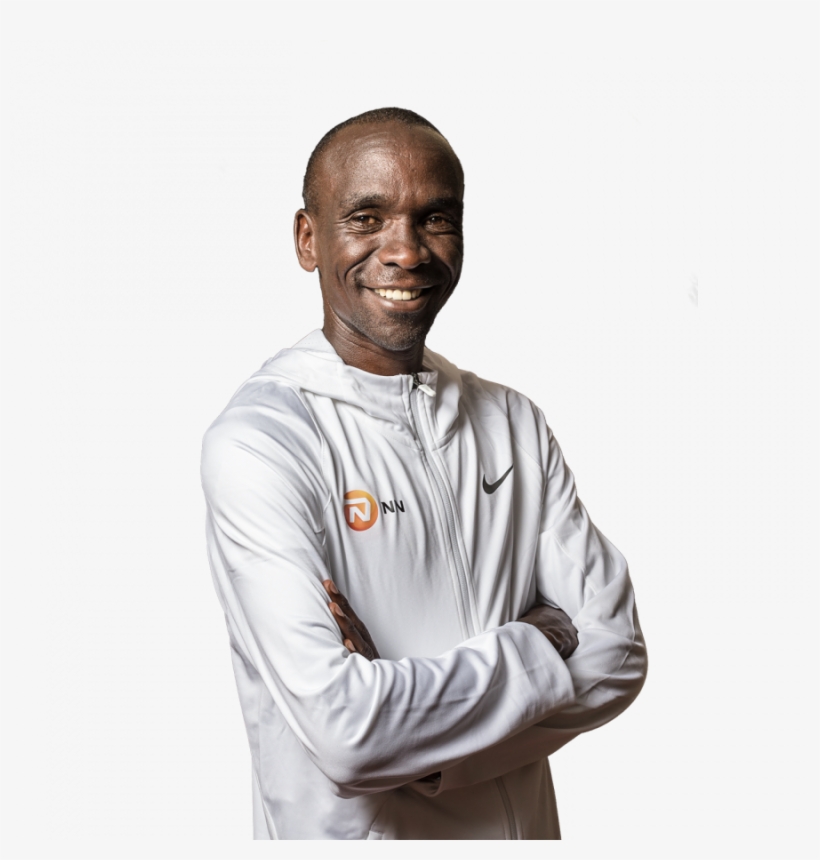Eliud Kipchoge, a 37-year-old Kenyan national, is a professional long-distance runner. Initially, he participated in 5,000-meter races, where he reached several world championship finals, became the junior and senior world champion, and obtained 2 medals in the Olympics.
In 2012, he shifted his career focus and ran his first half-marathon and, the following year, he ran his first marathon, coming in first place in Hamburg.
Currently, he’s regarded as the best marathon runner in history, after winning 17 marathons, two Olympic Games, and achieving the world record in the 2018 Berlin Marathon, timing-in at 2:01:39 sec.

The INEOS 1:59 Challenge
In May 2019, a few days after his victory in the London Marathon, Kipchoge announced another version of the “under two hours marathon”, labelled INEOS 1:59 Challenge.
The first version was held unsuccessfully in Monza in 2017, but two years later, on October 12, 2019, at the Prater Park in Vienna, he ran 4.4 laps around the Hauptallee, clocking-in at 1:59:40 and becoming the first recorded person in history to finish a marathon distance in under two hours.
The INEOS 1:59 Challenge is not only a new chapter in history and further proof that there are no limits but, also, the creation of a new way to run marathons.
Key factors for Eliud Kipchoge’s success in the INEOS 1:59 Challenge
Several elements and strategies were put in place for the achievement of this historic milestone, as described below:
- The formation used with the runners who accompanied Eliud sought to overcome wind resistance, in order to allow Eliud to be as aerodynamic as possible. This strategy is used mainly in cycling, and had not been previously used in a marathon.
- A steady racing pace is key in allowing the body to use resources in the most efficient way possible; when the goal is to accomplish an objective such as this one, this is of the essence. With this in mind, a pace car was used, which kept a constant speed of 21.0975 k/h. In order to maintain this speed, a cruise control system that was 30 times more accurate than the technology that is currently used in vehicles was created, because a variation of as little as 0.1 k/h would have resulted in Eliud being unable to achieve the record. Two speed sensors were used, along with multiple checkpoints, in order to ensure that the vehicle was being driven at the speed that had been previously set out to achieve the record. Additionally, two vehicles were equipped with the same technology, in case one of them failed.
- Weather is also a key factor. For instance, if any rain had fallen, this would have increased the weight of Kipchoge’s clothes and trainers. Therefore, finding a location with the proper weather conditions was not a simple task. There were 3 factors to take into account when choosing the event’s date: the time of the year when the best conditions would exist in Vienna; the exact date of the race had to be chosen 72 hours in advance; and, finally, the two hours within the specific date when the best wind conditions would be in place.
- Choosing the circuit was also a significant element to take into consideration, as the track had to have an exact distance of 26.2 miles, as even a couple additional meters would have made achieving the objective more difficult. Additionally, the circuit was also required to have the proper slope according to the IAAF, sufficiently wide, and the pavement had to be levelled and properly finished.
Priority was also given to a track with the least number of turns and changes in direction, because these features result in an increased waste of energy by the runner. Moreover, a line was painted on the ground, which the runners were required to follow in order to complete the circuit in the most efficient possible way.
Finally, with the aid of new technologies, the entire setting was examined via a three-dimensional scanner, in order to record, with pinpoint accuracy, any changes of elevation throughout the course, and use them in favour of Eliud and his runners.
Body and mind
Eliud had outstanding levels of Vo2 max, a high lactate threshold, and an excellent running economy. There was no way that he could further improve and, consequently, greater advantage had to be taken from his physical condition and a skilled support team. After almost achieving the objective in Monza 2017, Kipchoge was convinced that he would be able to accomplish his goal in Vienna and so the INEOS team looked for a way to help him reduce the required 26 seconds.
Vienna was not chosen randomly. Besides being 165 meters above sea level, and in addition to a scenery that is abundant in trees, Vienna supplied the natural reinforcement that Eliud needed to maximize the effects of his altitude training in Kenya. Also, this circuit permitted the attendance of a large crowd at all times and this was a key factor, because support from the fans was fundamental to maintain Kipchoge’s motivation. An estimated 120,000 people attended the event at Prater Park that day.
Likewise, the issue of Eliud’s nutrition was worked on during the three days preceding the race. Nutrition was practiced beforehand, in order to adjust the food, quantities, and frequency of consumption. Therefore, when a decision had been made as to when the race would take place, the diet could no longer be modified, as the 72 hours prior to the event were key for him to have the fuel required for the race. Had the date and the time been changed, Eliud could have begun gaining weight and thus decreased his performance.
During the race, his manager – from a bicycle – supplied him with the precise amount of liquids that he needed. Then, the bottle’s contents were measured, in order to accurately monitor Eliud’s consumption and how much he would need for the next kilometres.
Finally, the 1:59 INEOS Challenge in Vienna marked the first occasion on which Eliud Kipchoge’s family was able to see him compete live. For him, it was essential that his family were present at the finish line; this was his level of certainty that he would cross the finish line successfully and complete the challenge.
All measurements regarding slope, distance, and starting points were recorded under IAAF parameters, so that it would be considered as a valid record. However, the effort ultimately was not recorded as a new world record under IAAF rules, due to the event’s setup. Specifically, the reasons for this were that it was not an open event, that Kipchoge received hydration from his support team at all times, that the race included a safety car, and that rotational teams from other runners participated, setting Kipchoge’s pace in a formation designed to reduce wind resistance and maximize efficiency.
Nevertheless, Kipchoge’s achievement was recognized by the Guinness World Records, under the categories of “Fastest Marathon Distance (Male)” and “First Marathon Distance Run Under Two Hours”.
All the same, on October 12, 2019, Eliud Kipchoge and his team made history.
